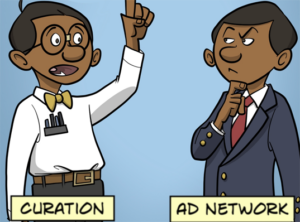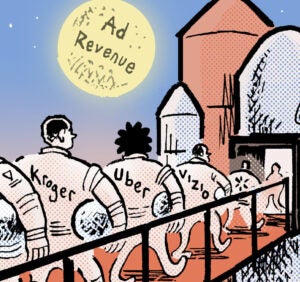“Data Driven Thinking” is a new column written by members of the media community and containing fresh ideas on the digital revolution in media.
Today’s column is written by Ted Shergalis is Chief Strategy Officer of [x+1], a buy side optimization platform.
 The benefits of real time exchanges to buy side participants are clear. Both reach and efficiency should improve in an environment where bidders can pick exactly which impressions they’d like to buy. It may seem as though the exchange environment gives the upper hand to the buy side, but little attention has been paid to potential sell side countermoves. What might publishers do to benefit from the rise of the real time exchange?
The benefits of real time exchanges to buy side participants are clear. Both reach and efficiency should improve in an environment where bidders can pick exactly which impressions they’d like to buy. It may seem as though the exchange environment gives the upper hand to the buy side, but little attention has been paid to potential sell side countermoves. What might publishers do to benefit from the rise of the real time exchange?
The short answer: Publishers will become active participants in the exchange system.
Presently, publishers and sellers have a tendency to regard the exchanges just like any other reseller of their inventory. They see exchanges and ad networks as a simple solution to their excess inventory problem, as the exchanges provide a convenient outlet to make a few dollars off the impressions that their direct sales force was not able to sell while keeping their management costs down. Publishers and sellers are fairly indifferent to whether Right Media, DoubleClick, ValueClick or any other reseller monetizes their inventory for them. Traditionally, this lack of interest in what is done with excess inventory has been justified by the fact that most publishers make approximately 80% of their revenue from direct sales of 20% of their inventory.
Real time exchanges are fundamentally different than other 3rd party resellers of inventory. To begin with, publishers have much more insight into what their inventory is actually worth because they can see the price it is commanding on the open market. This transparency opens up new strategies for publishers to even out the playing field and use the real time exchanges to profit from unsold inventory:
1. Aggressively set and re-set floor prices
Companies like DoubleClick and OpenX allow publishers to set their own floor prices on the exchanges. Older exchange models have no floor price and leave the inventory selling price up to the bidders. Instead of arbitrarily setting a minimum bid and leaving it in place, the ideal floor price needs to be determined by generating a cost benefit analysis based on what comparable inventory is going for. With better analytics, a publisher can determine what the true market value for their inventory is and whether or not they will profit from taking part in certain transactions on the exchanges. As the publishers continue to refine this process, they will work with exchange reps to better understand the bid landscape and how to more effectively determine the ideal clearing price for similar media.
The next step for the publishers is to set floor prices for different sections, audiences and targeting criteria, based on the differing open market prices for each. As a publisher becomes more proficient, they can determine which areas will bring them the highest price and sell through and roughly how much they should be making from each.
2. “Influence” bid prices on the exchanges
Since the publisher is taking part in the exchanges anyway, why not be an active part of the bidding process? The smartest and most innovative publishers will accept the risk of not selling their inventory in every transaction by making their ad’s bid price increase. How can they increase their bid price? Simple – by bidding on their own inventory through the exchanges. Is this possible? Yes, the exchanges are an open market. And if the publisher does, in fact, bid the highest price, they will have to purchase their own inventory, fill the ad space with their own ad (or an ad from one of their advertisers) and sacrifice exchange fees in the process. Most publishers who are skilled in yield management should be able to get the hang of this process quickly. They will learn when to carefully increase the bid price and how much they should increase it by. In this way they will only be raising the price enough to generate more profits. Should the publishers become too greedy, they’ll find themselves purchasing their own inventory too often. As such, the publisher side trading desk has a clear, self-regulating dynamic.
The net effect of these strategies will be an evening out of the buyer-seller playing field. Granted, publisher strategies like these will create a more active, dynamic market, and as in any open market, the prices should become more transparent and the value of media more closely aligned to its real world value.
Follow [x+1] (@xplusone) and AdExchanger.com (@adexchanger) on Twitter.













